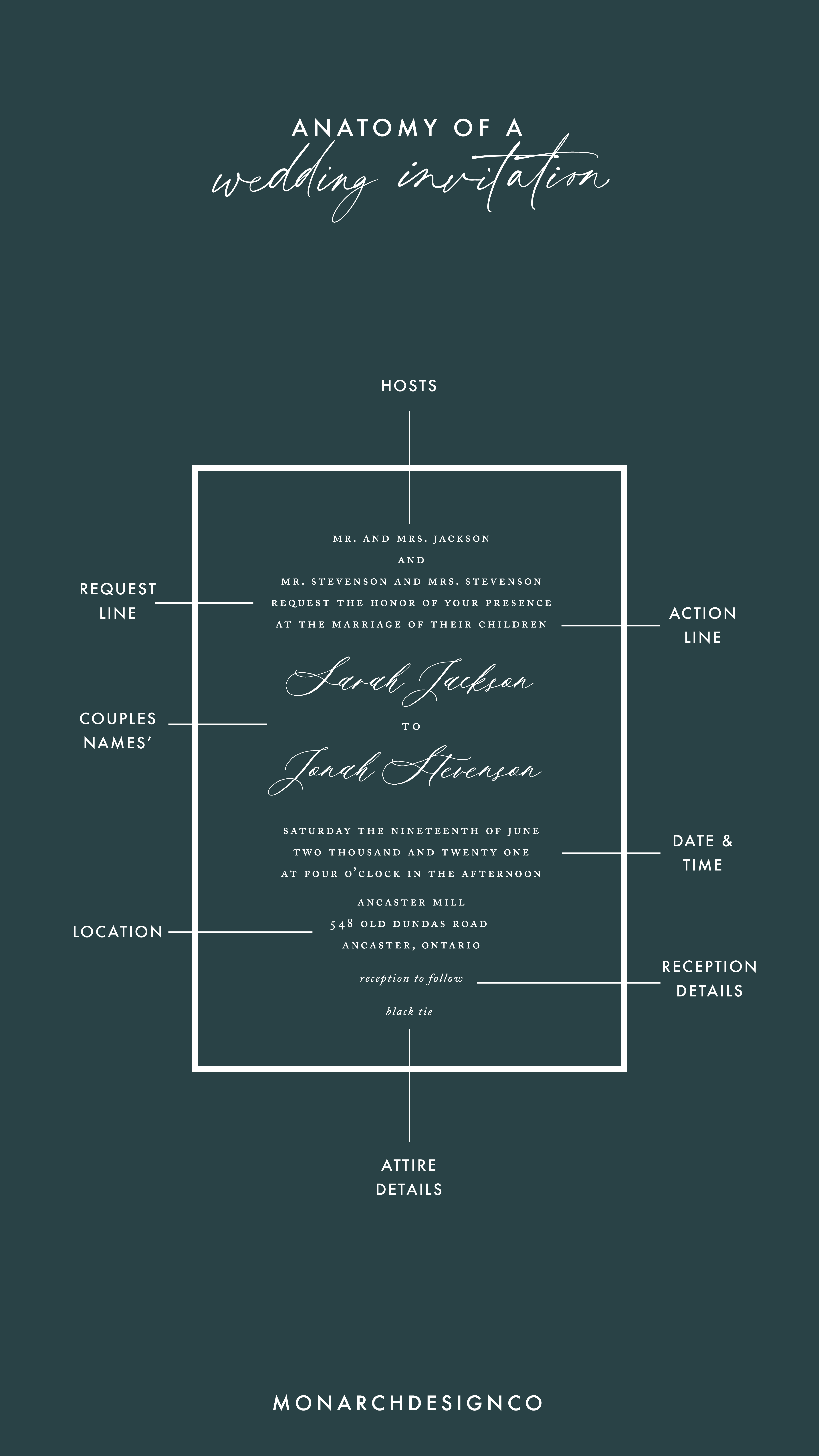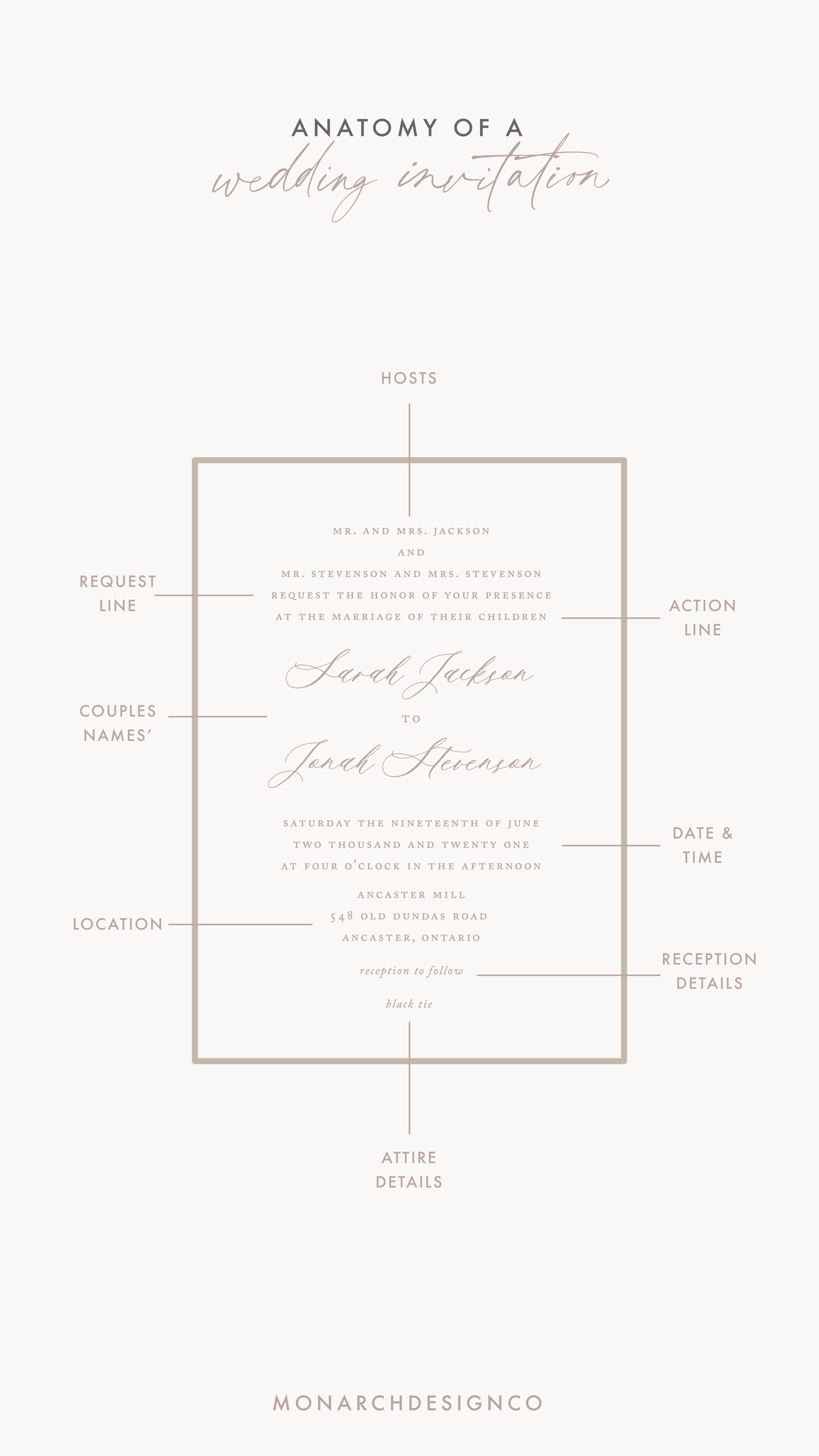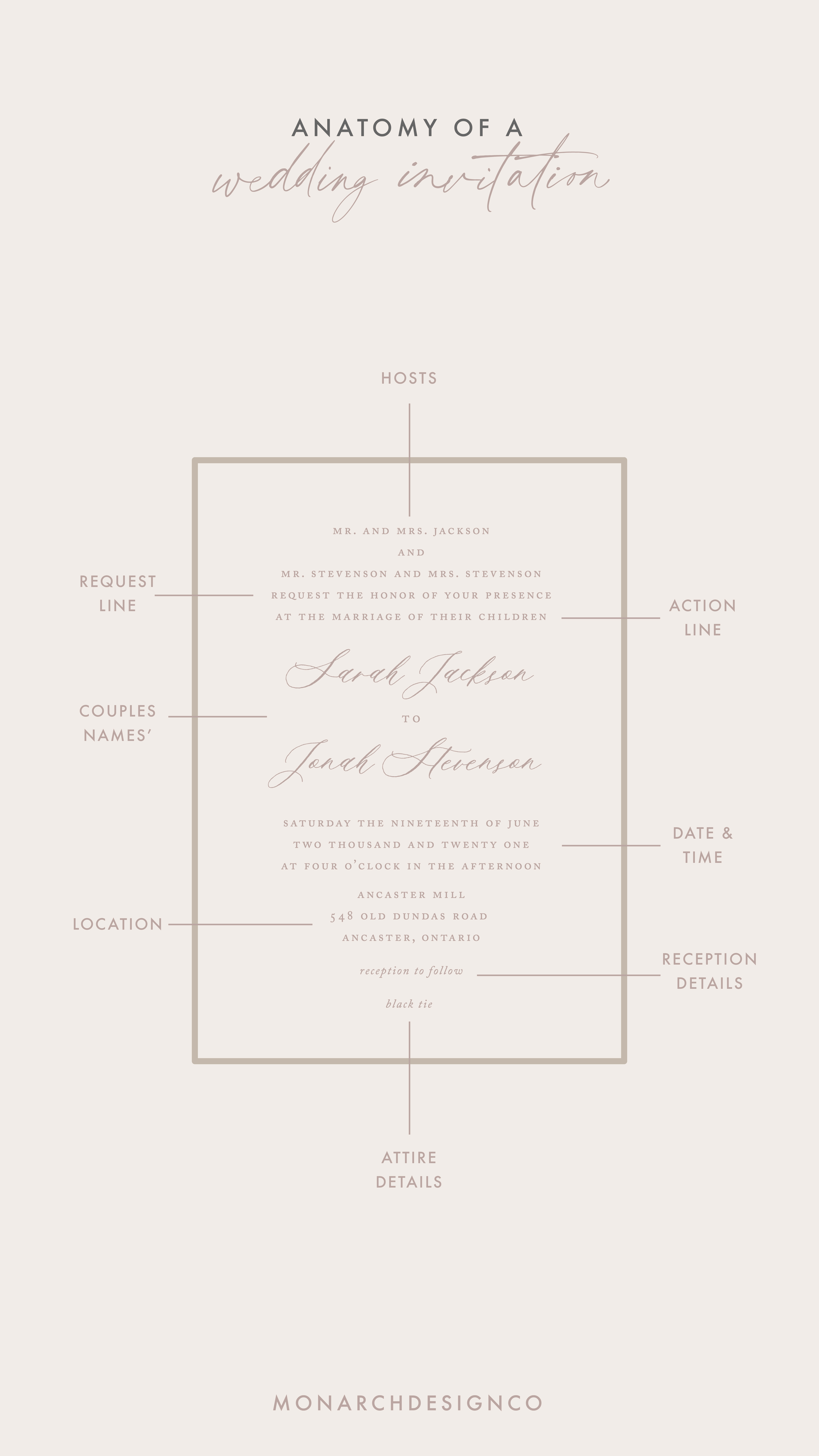Anatomy of a Wedding Invitation
December 28, 2020
How To Properly Word Your Wedding Invitations
Your wedding invitations are the very first thing that will set the tone for your celebration. As much as it is important to pick a beautiful design that conveys your wedding theme and personalities, it is also important to ensure all the details of your event are included and conveyed in a way that your guests will understand.To help with this, we’ve created a fool-proof guide to the anatomy of a wedding invitation to ensure you include everything your guests need to know about your special day.
- Hosts
Example: “Mr. and Mrs. John Doe and Mr. and Mrs. Joe Blo”
What will likely start off your invitation are the names of the people who are hosting your wedding. Traditionally this line includes the names of the couple’s parents, or the names of the people who are paying for their wedding. A more formal option is to include the names of your parents (if they are still together, put an and between their names; if they are separated, put their names on two separate lines). Today, many couples pay for the wedding themselves, and in this case (especially if the parents have contributed financially to the wedding) can keep the host line simple by writing “Together with their families.” - The Request Line
Example: “request the pleasure of your company”
This line gives you more of an indication of what type of affair will take place. For formal, religious events, “request the honour of your presence” and “invite you to witness the marriage of” are commonly used. More casual, informal celebrations use lines such as “invite you to join them” and “want you to party with us!” Choose what you feel will best convey your event and your personalities. - The Action Line
Example: “at the marriage of their children”
This line details exactly what event your guests are invited to. If the hosts are the parents, wording such as “at the marriage of their children” or “at the celebration of their union” is typically used. A more casual, laid-back celebration can use verbiage such as “as they tie the knot” or “as they say ‘I Do.’” - Names Of The Couple
Example: “Jane Ashley and John Lucas”
If the parents are hosting the wedding, formal wording generally includes the bride and groom’s middle names. Traditionally, if the bride’s parents are hosting the wedding, the names of the couple would look something like, “Jane Ashley to John Lucas.” Today, many couples drop the formalities and use their first names only. You can also use your full names. Feel free to use whatever you think sounds or looks the best. - Date And Time
Example: “Friday, the thirtieth of April, two thousand twenty-one, at two o’clock”
The way date and time is presented also indicates the formality of your event. Traditionally, the date and time of the wedding is completely spelled out, like in the example above. However, wedding invitations today are more flexible with this, and can include numbers, especially true for more modern invitations or for a more informal event. - Location
Example: “The Don Gallery, Toronto, Ontario”
Write the name of the venue, and then the city and province after it. You do not need to include the address of the venue, unless it is a private residence. - Reception Details
Example: “Formal cocktails and reception to follow”
After the date, time and location, make sure to outline the events that come after the wedding ceremony. If there will only be cocktails and hors d’oeuvres served, this is where to put that information. If the reception will be held at a different location, you can put the name of the venue on the following line. You can also include a separate card along with your invitation that includes directions to the reception venue. This separate card often includes more details, such as the time of cocktails, dinner, and the full address of the venue. - Attire
It isn’t required to include wedding attire on your wedding, but it will definitely help your guests decide what to wear. If your wedding will be a formal, black-tie event, make sure that you state this on the invitation, after the reception details. You want to ensure your guests feel comfortable and not out of place at your wedding!
Other Inserts
With your invitation you’ll probably include accompanying pieces such as the RSVP card and envelope that your guests will send back to you, as well as a details card that highlights other important information such as accommodations, registry information and wedding website.
When in doubt, it is best to consult your stationery designer for their ideas on what looks and sounds the best. After crafting invitations for a countless number of unique celebrations, they’ll know what works and what doesn’t. Make sure your invitation represents you as a couple, and have fun with it!
Pin These Photos For Later
Leave a Reply Cancel reply
Menu
serving simcoe county, barrie, the greater toronto area & worldwide
Contact
hello@themonarchdesign.co
Branding & Showit Web Design Studio | Serving Creative Entrepreneurs, Service Providers & Wedding Professionals in Barrie, Toronto, Niagara, Muskoka, Cambridge, Kitchener, Guelph, Hamilton, Burlington, Oakville, Mississauga, Vaughan, Simcoe County & Southern Ontario.
Monarch Design Co. © 2025 | Site & Branding Designed by Monarch Design Co. | Site Credits


